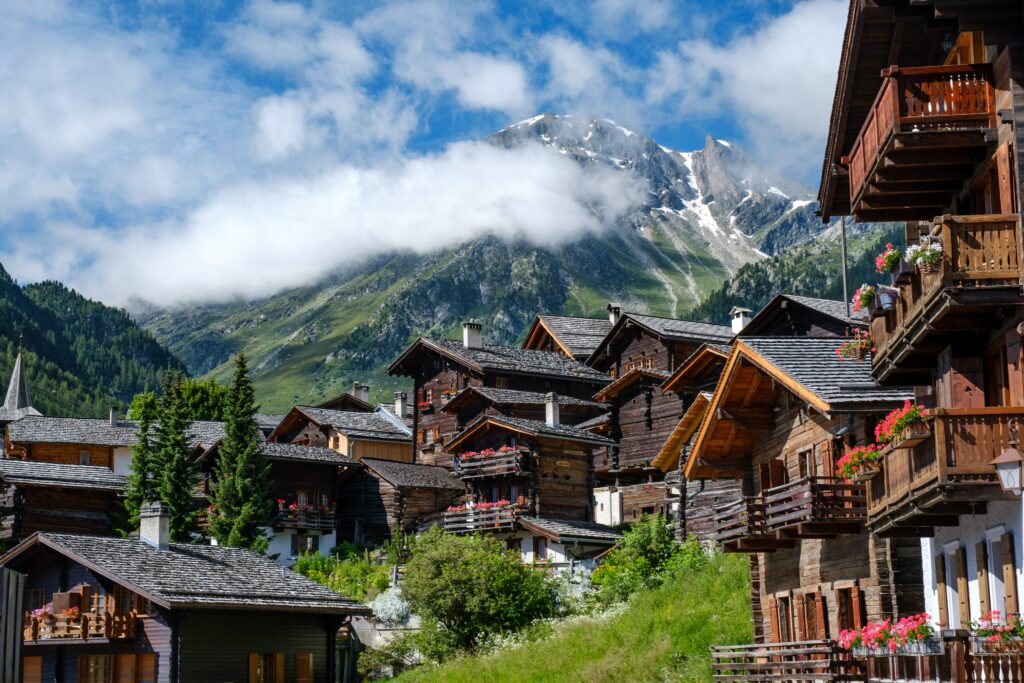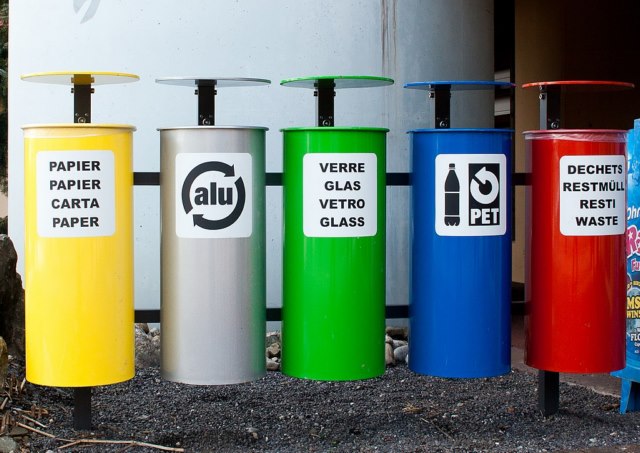Mi., Juni 22nd 2022
The world’s top climate scientists warn that significantly reducing greenhouses gas emissions is imperative to reduce global warming and avoid the most catastrophic effects to the planet. What is Switzerland doing to prioritize sustainability and climate change?

Nature is one of the biggest draws for Switzerland’s tourism and the country is working to protect it.
How climate change has directly affected Switzerland
Landlocked Switzerland’s average temperature rises two to three times faster than the global average because it lacks ocean access which helps mitigate the rise in temperature. From 1864 to 2016, the temperature in the alpine country increased 2°C, but this warming trend is projected to rise considerably if concrete measures to address the levels of concentrated greenhouse gases are not put into action.
This would mean an increase in length, frequency, and intensity of heatwaves during the summer months, especially in southern Switzerland. From 1961 to 2016, the number of days with temperatures above 25°C doubled. Moreover, the average water temperature in Swiss bodies of water (rivers, streams), rose 1.2°C between 1954-2016.
High levels of greenhouse gas emissions also affect winter precipitation. Climate estimates project that winter precipitation could increase up to 15 percent over the next 50 years. Extreme precipitation would become more frequent and intense during the winter months, especially in northern Switzerland. This rise in winter precipitation, with the melting of snow to rain in the spring would, in turn, also affect hydropower and lead to floods.

Landlocked Switzerland’s average temperature rises two to three times faster than the global average because it lacks ocean access.
Switzerland’s international initiatives to fight climate change
Switzerland’s Federal Council’s Adaptation to Climate Change has put into action a series of sustainability initiatives, both in its international agreements and national policies, to address the fight against climate change. The alpine country has been a global leader in sustainability. In 2017, it was named one of the top five countries out of 149 countries to meet the United Nations’ Sustainable Development Goals (SDG) 2030.
The SDG Index looks at a country’s current progress and compares it to a benchmark assessment from 2015. The highest ranked performers ahead of Switzerland are the Scandinavian countries: Sweden, Denmark, Norway, and Finland.
Switzerland signed the Paris Climate Agreement in 2016 and pledged to adjust its targets and lower its carbon emissions by 70 to 85 percent by 2030. This commitment was signed just as the Intergovernmental Panel on Climate Change (IPCC) announced that temperatures would need to be lowered by 2°C by 2100 to avert grave irreversible outcomes for the planet.
Furthermore, in 2019 the United Nations released a report indicating that fossil fuels still prevail over the global energy system. This contributes to alarming levels of greenhouse gases in the atmosphere. What this means is that the impact on climate change is now estimated to strike harder and more quickly than previously projected. As a result of these findings, Switzerland amended its targets in the same year and declared that it would be climate neutral by 2050.

Climate estimates project that winter precipitation could increase up to 15 percent over the next 50 years, with an increase especially in extreme winter weather.
Net-Zero emissions
Some countries such as Suriname and Bhutan have already reached net zero emissions by absorbing more carbon dioxide than they emit. Switzerland has joined a handful of other nations — such as the United Kingdom and New Zealand — to scale up its efforts to reach a net-zero goal where equal amounts of emissions are absorbed by the atmosphere. This can be done using storage technology or carbon capture to filter carbon dioxide out of the air.
Another mitigating method is to plant more trees, especially ones that can cope with warmer weather. According to researchers and scientists in Switzerland, planting one trillion trees could capture more than 800 billion tons of carbon dioxide in the atmosphere, amounting to 25 years of carbon pollution.
As of 2020, 75 percent of Switzerland’s power comes from renewable sources. 60 percent of its electricity comes from hydropower, which is made from high levels of annual rainfall. In contrast, only 20 percent of electricity in the United States comes from renewable sources.

More than 75% of Switzerland’s power comes from renewable energy sources, such as hydropower.
Switzerland’s legislative policies along with the Federal Office for the Environment (FOEN) plan to enforce its greenhouse gas reduction goals to mitigate climate-related risks by implementing a series of actions, such as:
Recycling
Switzerland is a global leader in waste management and recycling. The alpine country has an impressive system of separating and recycling organic and recyclable waste and converting the rest to energy. A staggering 60 percent of municipal waste is recycled. This figure is high compared to its European neighbors who average a mere 26 percent.

Not only do the Swiss recycle diligently, every household is given tools to compost their own food waste.
Capturing Carbon
Climeworks AG, the world’s first carbon-capture plant located just outside of Zurich, removes about 900 tons of carbon dioxide a year by pushing air through a filter. This binds the carbon dioxide in place, heats it, and captures the gas to be delivered to greenhouses. With 250,000 other industrial-scale plants, the Climeworks founders believe these plants can reduce 1 percent of the worlds carbon dioxide emissions.
Preserving Water Quality
Wastewater treatment plants around Switzerland clean 90 million liters of wastewater per day. The plants also produce biogas – an environmentally friendly, renewable energy source — from sewage sludge which is used by public transport systems. Moreover, Switzerland has built over 800 wastewater treatment plants to protect and preserve its water supply.
Safeguarding and Supporting Climate Refugees
Climate disasters such as extreme weather and water scarcity displace a growing number of people each year. The World Economic Forum projects that by the year 2100, approximately 660,000 asylum seekers will head towards Europe per year.
Switzerland, together with Norway, created the Nansen Initiative in 2015. The Nansen Initiative is a disaster-induced, cross-border displacement protection agency that addresses challenges associated with climate migration on a global scale. This includes protecting displaced people seeking asylum from natural disasters.
Climate and Clean Air Coalition (CCAC)
Switzerland’s clean air policies have been instrumental in the reduction of climate pollutants and methane emissions from implemented agricultural policies such as efficient livestock production and manure management. Between 2000-2018, black carbon emissions were reduced by 70 percent due to the enforcement of particle filter regulations in diesel engines.

The Swiss are even working to mitigate cow flatulence — a major contributor to greenhouse gasses.
Mootral
Cow flatulence emits significant quantities of methane and nitrous oxide; meaning Switzerland’s favorite animal, the cow, is contributing quite a bit to climate change. The Swiss company Mootral provides natural feed supplements to lower the emissions by 30 percent.
What’s next?
Temperatures around the world have been hottest on record since 2015. What does the future hold? How successfully will the global community effectively put into action the pressing issues of climate change?
Considering the uncertainties of these complex environmental threats, Switzerland’s longstanding policies, commitments, and action plans to accelerate climate change progress and protection are crucial to combat climate change. To make a significant difference, massively reducing the levels of emissions, decarbonizing entire value chains, and scaling low carbon solutions must be boldly carried out to avoid the most devastating consequences to the planet.
Dieser Artikel darf frei weitergegeben und nachgedruckt werden, vorausgesetzt, es wird auf den Originalartikel verwiesen.
